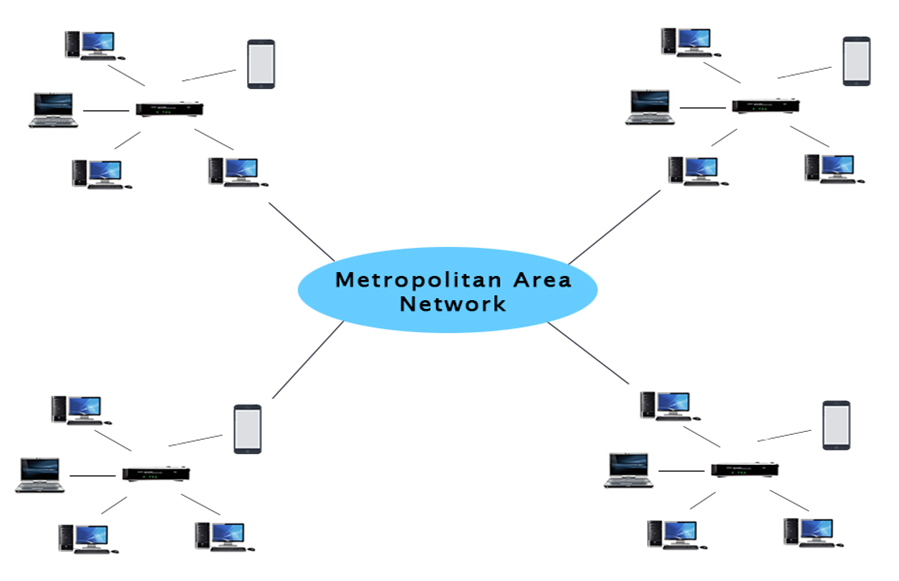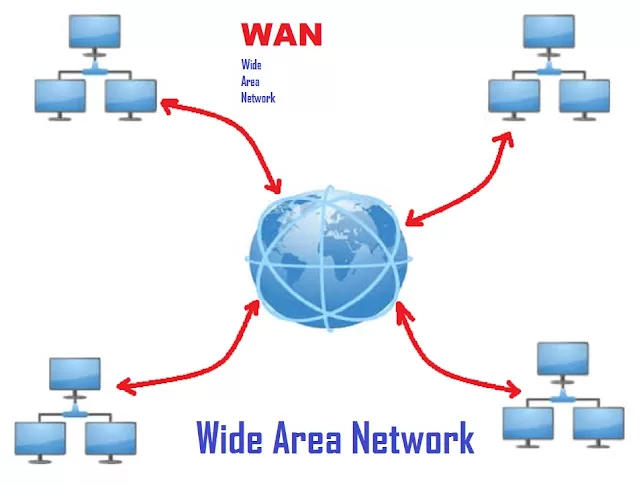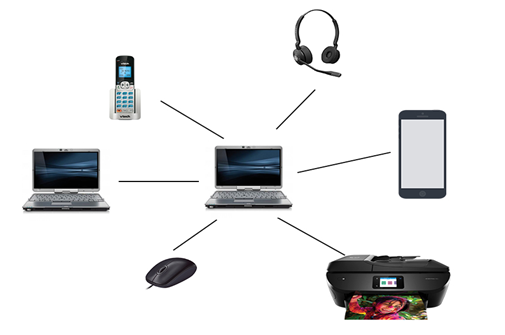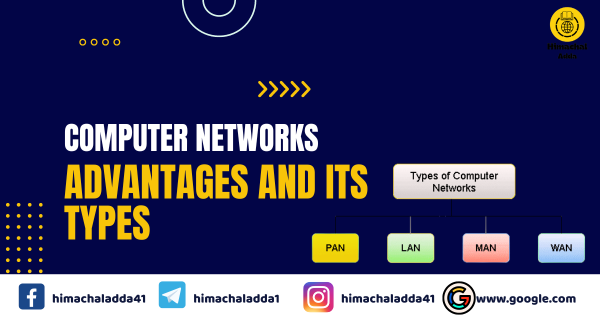Explain Computer Networks in Details
A computer network is a collection of interconnected computers and other devices (such as printers and routers) that are linked together to share resources and information. These networks can be small, like a home network connecting a few devices, or large, like the global internet, which connects billions of devices worldwide. Computer networks enable communication and data exchange between devices, facilitating the sharing of data, resources, and services.
Advantages of Computer Networks:
- Central storage of data: Files are stored on a central database that can be accessed by everyone.
- Connectivity: A single connection can be routed to connect multiple devices.
- Communication: Computers can communicate with each other through email, chat, video conferencing, etc.
- Resource sharing: Computers can share resources such as printers, scanners, internet, etc.
- Cost factor: Computer networks can reduce the cost of hardware and software by sharing them among users.
- Remote Access: Users can access resources and data on the network from remote locations, enhancing flexibility and productivity, especially in the context of remote work and online learning.
- Security: Properly configured networks can have robust security measures in place to protect against unauthorized access and data breaches.
Classification of Computer Networks:-
Computer network can be classified into different categories:
1) LAN (Local Area Network)
2) MAN (Metropolitan Area Network)
3) WAN (Wide Area Network)
4) PAN (Personal Area Network)
- LAN (Local Area Network) -: Local Area Network is a group of computers connected to each other in a small area such as home, office, school. LAN is used for connecting two or more personal computers through a communication medium such as twisted pair, coaxial cable etc. LAN offer high-speed data transfer and are commonly used for connecting devices within a single building.

2. MAN (Metropolitan Area Network) -: MANs cover a city or a metropolitan area. They are often used by organizations that need high-speed data transfer between multiple locations within a city. In Man, various LANs are connected to each other through a telephone exchange line. It has a higher range than Local Area Network (LAN), e.g. cable TV network.

3. WAN (Wide Area Network) -: A Wide Area Network is a network that connects computers over greater areas, such as states, countries, continents or whole around the world. WAN is quite bigger network than the LAN. A Wide Area Network is not limited to a single location. The Internet is one of the biggest WAN in world.

4. PAN (Personal Area Network) -: Personal Area Network is a network arranged within an individual person, typically within a range of 10 metres. PANs are small networks used for connecting personal devices like smartphones, tablets, and laptops. Bluetooth and Wi-Fi are common technologies for PANs.





